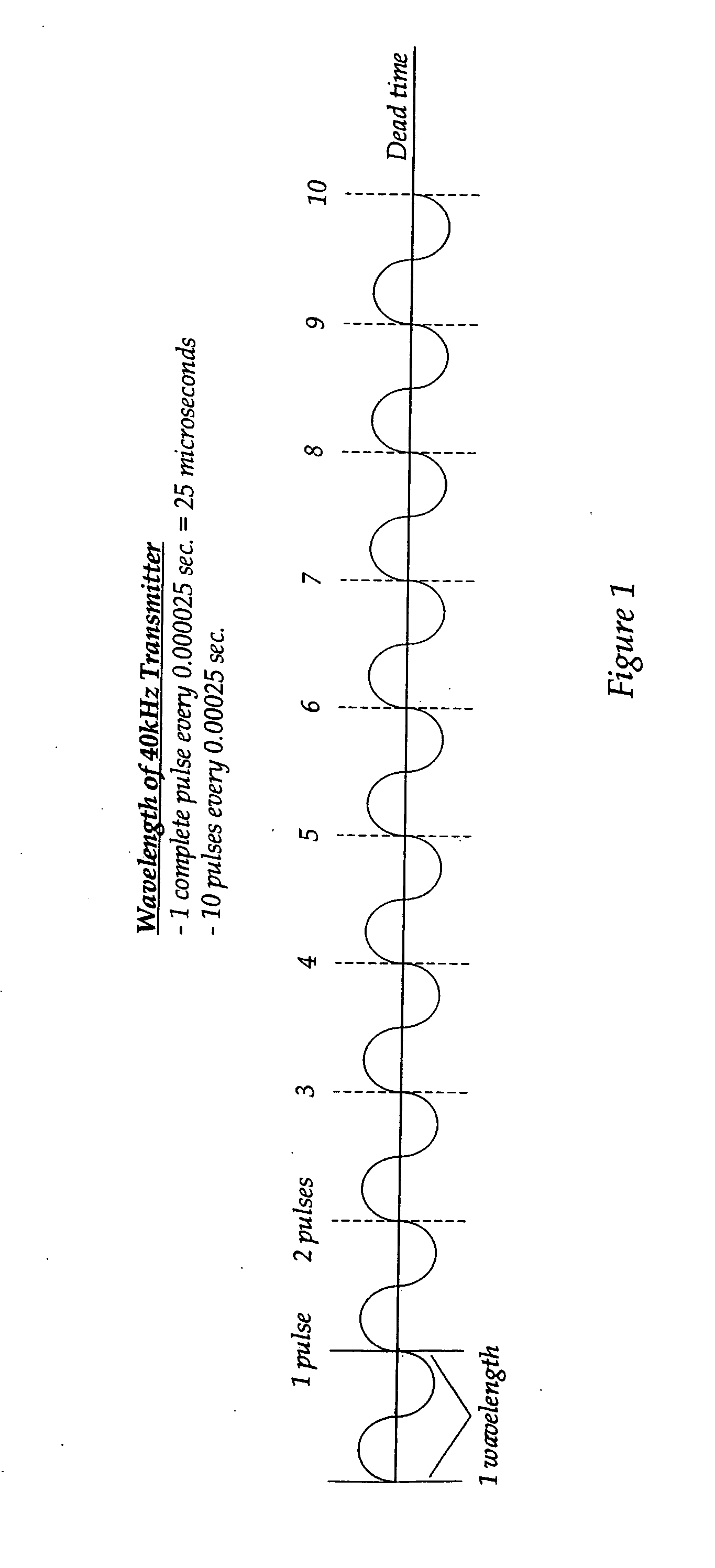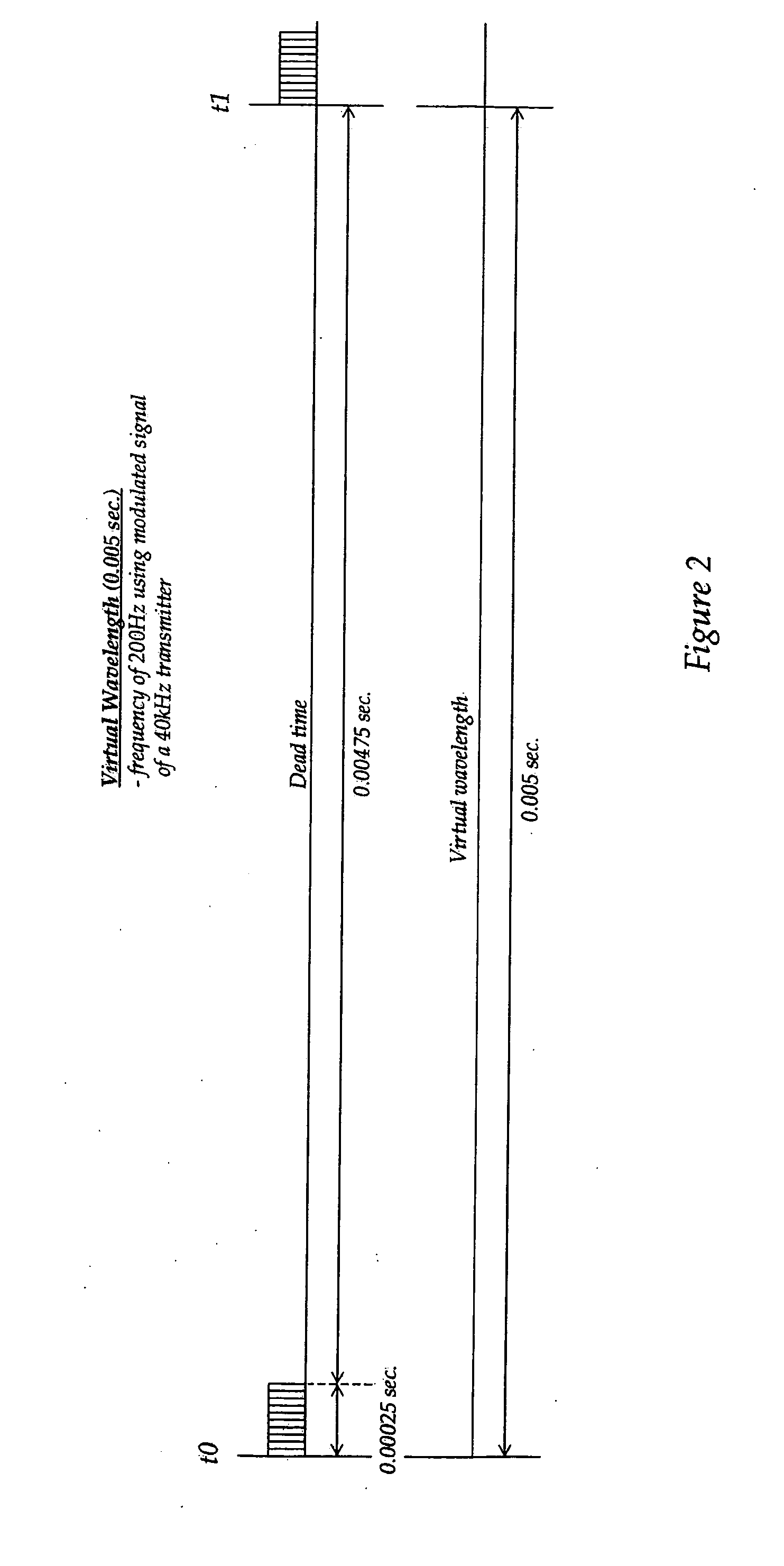Frequency matched relative position tracking system
a relative position and tracking system technology, applied in direction finders, instruments, computing, etc., can solve the problems of unnecessary phase synchronization between the signal source and the sync clock, and achieve the effects of saving energy, prolonging the transmitter life, and increasing the clocking speed of the microcontroller
- Summary
- Abstract
- Description
- Claims
- Application Information
AI Technical Summary
Benefits of technology
Problems solved by technology
Method used
Image
Examples
example 1
[0042]In one embodiment, the present invention can be used to track the movement of a pointer or writing device for direct input into a computer. As depicted in FIG. 6, an omni directional USS 10 is incorporated into the pointer or writing device 15, and is used in conjunction with two or more ultrasonic transducers 20, an ultrasonic driver 25, and a multi-channel ultrasonic receiver 30 with an RS-232 port (the driver and receiver may be housed together). Although FIG. 1 depicts the pointer 15 as directly connected to the ultrasonic receiver 30 / ultrasonic driver 25, direct connection is not required. The system is also preferably configured to communicate to a central computer 35 (or control system) for processing. The system is also preferably configured to display the tracked movement on a computer display (not depicted).
[0043]If a three-channel three-axis (X-Y-Z) receiver is used, the Z-axis can be assigned a value of 1 due to the two-dimensional application. A communication link...
example 2
[0048]When tracking human movements at a relatively slow speed, such as tracking a pointer or writing implement, a slower sampling rate can be used. However, when tracking fast movement, such as a golf club, bat, or tennis racket, a much higher sampling rate is required.
[0049]For example, in an application using a virtual wavelength of 0.006643 sec. with a frequency of approximately 150 Hz (or cycles per second), and a measuring distance of approximately 7 feet 5 inches, an object traveling at 100 mph can cover that distance in 51 ms. Multiplying the sampling rate by the minimum time it takes an object to cover the measuring distance yields the worst case or minimum number of data points that will be taken (151.9 Hz*51 ms=7.7469) for the given period of time. Obviously 7 data points would be insufficient to accurately track a fast moving object across 7′5″.
[0050]Sixty data points, for example, would work much better for tracking a golf club swing over a 12′ area. An object traveling...
PUM
 Login to View More
Login to View More Abstract
Description
Claims
Application Information
 Login to View More
Login to View More - R&D
- Intellectual Property
- Life Sciences
- Materials
- Tech Scout
- Unparalleled Data Quality
- Higher Quality Content
- 60% Fewer Hallucinations
Browse by: Latest US Patents, China's latest patents, Technical Efficacy Thesaurus, Application Domain, Technology Topic, Popular Technical Reports.
© 2025 PatSnap. All rights reserved.Legal|Privacy policy|Modern Slavery Act Transparency Statement|Sitemap|About US| Contact US: help@patsnap.com



